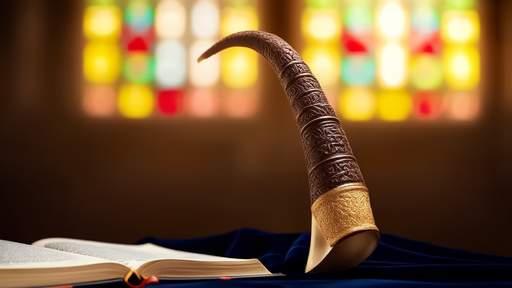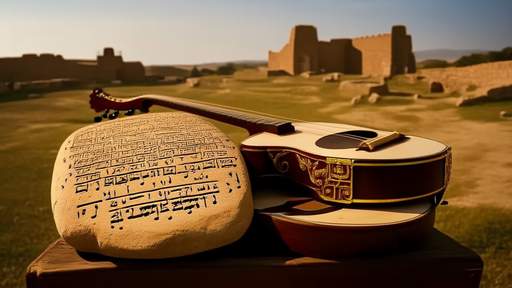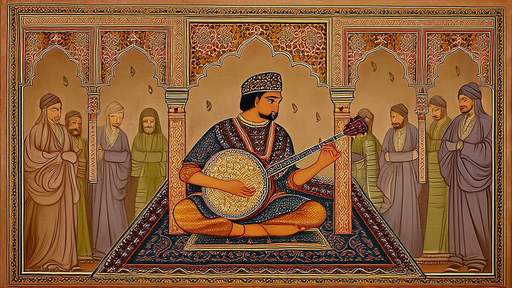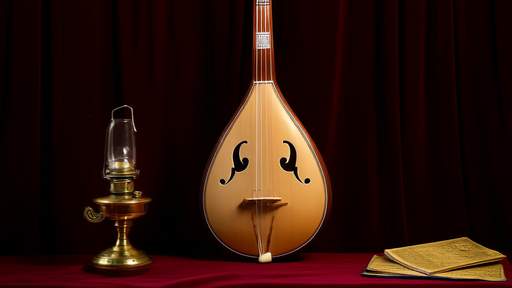The haunting, resonant sound of the shofar echoes through synagogues and Jewish communities worldwide as Rosh Hashanah, the Jewish New Year, approaches. This ancient instrument, crafted from a ram’s horn, carries with it centuries of spiritual significance, tradition, and symbolism. Its piercing blasts are not merely ritualistic; they are a call to introspection, repentance, and renewal. The shofar’s voice transcends time, connecting modern worshippers to their ancestors and to the divine.
The shofar is deeply embedded in Jewish history and theology. Its origins trace back to the Torah, where it is mentioned in connection with pivotal moments, such as the revelation at Mount Sinai and the fall of Jericho. In the context of Rosh Hashanah, it serves as a spiritual alarm clock, rousing individuals from complacency and urging them to examine their deeds. The Talmud elaborates on its significance, describing the shofar as an instrument that confuses the "prosecutor" (Satan) and evokes divine mercy. Its raw, unadorned sound is intentional—unlike a trumpet or flute, it is untouched by human craftsmanship beyond its basic formation, symbolizing raw, unfiltered prayer.
The preparation of a shofar is an art in itself. Not every ram’s horn is suitable; it must be free of cracks, imperfections, and excessive curvature. The process of cleaning, shaping, and polishing the horn is meticulous, often passed down through generations of craftsmen. The mouthpiece is carefully carved to allow the ba’al tekiah (shofar blower) to produce the required notes: tekiah (a long, unbroken blast), shevarim (three shorter wails), and teruah (a rapid series of staccato bursts). Mastering these sounds demands both physical endurance and spiritual focus, as the blower must sustain breath control while standing before the congregation.
On Rosh Hashanah, the shofar is blown in a specific sequence, totaling one hundred blasts over the course of the holiday. Each set of notes carries its own meaning. The tekiah represents coronation—a declaration of God’s sovereignty. The shevarim-teruah evokes sorrow, a lament for misdeeds and a plea for forgiveness. The final tekiah gedolah, an extended blast, symbolizes hope and the enduring bond between the Jewish people and their faith. The congregation listens in silence, many with eyes closed, as the sound stirs something deep within the soul.
Beyond its liturgical role, the shofar has served as a unifying force in Jewish history. During times of persecution, it was blown as a clandestine signal or a rallying cry. In modern Israel, its sound marks national moments of remembrance, such as Yom HaZikaron. Yet, its most profound impact remains in the personal sphere. For many, hearing the shofar is an emotional experience—a reminder of lost loved ones, a rekindling of faith, or a moment of clarity amid life’s chaos. It is both a communal and deeply individual ritual.
The shofar’s symbolism extends into broader philosophical and ethical dimensions. Its curved shape is said to represent the bending of the human heart in humility. The fact that it is an animal’s horn, rather than a manufactured instrument, underscores the connection between humanity, nature, and the divine. Some mystics interpret its sound as the "voice of the unspeakable," a divine language that bypasses intellect and speaks directly to the spirit. In a world increasingly dominated by noise—digital, mechanical, and trivial—the shofar’s primal cry cuts through, demanding attention and reflection.
Today, the shofar continues to inspire beyond traditional Jewish settings. Musicians incorporate its tones into contemporary compositions, and interfaith audiences marvel at its haunting beauty. Workshops teach non-Jews how to blow it, and scholars debate its psychological and physiological effects. Yet, for all its expanding reach, its essence remains unchanged. When the shofar sounds this Rosh Hashanah, it will carry the same message it has for millennia: awaken, return, begin anew.

By /Jun 6, 2025

By /Jun 6, 2025

By /Jun 6, 2025

By /Jun 6, 2025

By /Jun 6, 2025

By /Jun 6, 2025

By /Jun 6, 2025

By /Jun 6, 2025

By /Jun 6, 2025

By /Jun 6, 2025

By /Jun 6, 2025

By /Jun 6, 2025

By /Jun 6, 2025

By /Jun 6, 2025

By /Jun 6, 2025

By /Jun 6, 2025

By /Jun 6, 2025

By /Jun 6, 2025

By /Jun 6, 2025

By /Jun 6, 2025